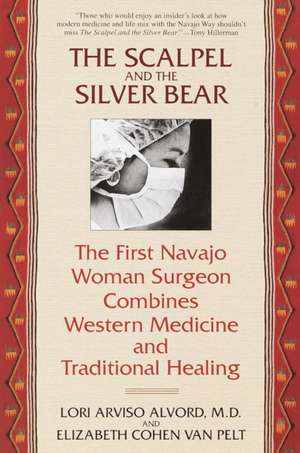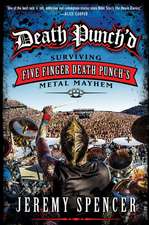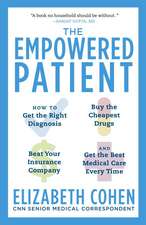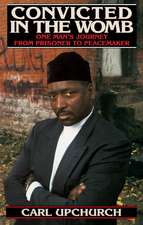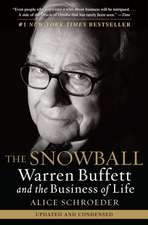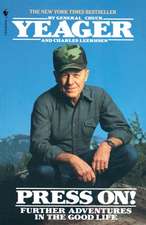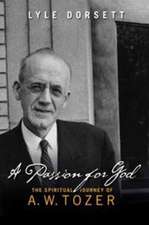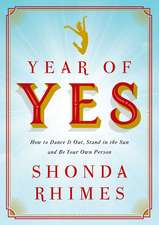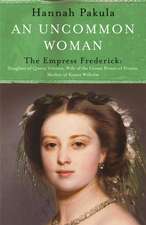The Scalpel and the Silver Bear: The First Navajo Woman Surgeon Combines Western Medicine and Traditional Healing
Autor Lori Arviso Alvord, Elizabeth Cohen, Elizabeth Cohen Van Pelten Limba Engleză Paperback – 31 mai 2000
A spellbinding journey between two worlds, this remarkable book describes surgeon Lori Arviso Alvord's struggles to bring modern medicine to the Navajo reservation in Gallup, New Mexico—and to bring the values of her people to a medical care system in danger of losing its heart.
Dr. Alvord left a dusty reservation in New Mexico for Stanford University Medical School, becoming the first Navajo woman surgeon. Rising above the odds presented by her own culture and the male-dominated world of surgeons, she returned to the reservation to find a new challenge. In dramatic encounters, Dr. Alvord witnessed the power of belief to influence health, for good or for ill. She came to merge the latest breakthroughs of medical science with the ancient tribal paths to recovery and wellness, following the Navajo philosophy of a balanced and harmonious life, called Walking in Beauty. And now, in bringing these principles to the world of medicine, The Scalpel and the Silver Bear joins those few rare works, such as Healing and the Mind, whose ideas have changed medical practices-and our understanding of the world.
Preț: 105.79 lei
Nou
20.25€ • 21.98$ • 17.01£
Carte disponibilă
Livrare economică 02-16 aprilie
Specificații
ISBN-10: 0553378007
Pagini: 224
Dimensiuni: 141 x 206 x 16 mm
Greutate: 0.24 kg
Editura: Bantam
Notă biografică
Elizabeth Cohen van Pelt is a staff writer with the New York Post. She lives in New York with her husband and daughter.
Extras
A Navajo weaver takes strands of wool and blends them into something of great beauty and magic; warp and weft combine into a pattern, and the pattern tells a story and has a spirit. This pattern then becomes a piece of the culture and has a life of its own. From the beginning I knew I had to do a similar thing with the strands of my story–to tell how a girl from a small and remote town on an Indian reservation was able to become a surgeon, able to work in the high-tech realm of a surgical operating room, and combine that with another story, about how ancient tribal ways and philosophies can help a floundering medical system find its way back to its original mission: healing.
The first strand of my story shows that anything is possible. The words "Navajo" and "surgeon" are not often seen together. But a minority woman can travel across cultural, class, and educational borders and become a part of a medical world whose doors have been closed to minority people for most of its existence. I hope that native people will be encouraged by this story, and that they will follow their own special dreams. The second story is about how I have come to understand, after years of reflection, that my tribe has knowledge about medicine and healing, ways of thinking about health and illness that provide solutions to some of modern medicine's most daunting problems.
It is common knowledge that modern medicine is in crisis. Never before has such an astounding array of medical treatments been available. The latest breakthroughs in research and methodology are stunning achievements and should be acknowledged as such, but along the way we have forgotten some of the things that heal us best–our relationships, how we live our lives, our feelings of wholeness and belonging. For all its technological advances and voyages into previously uncharted waters, modern medicine still has much to learn about healing. Now more than ever, patients themselves feel removed and forgotten, powerless in the face of the institutions that were created to help them. In many ways modern medicine has become a one-way system–from physician to patient. Physicians do the directing, talking at their patients. The other direction, the listening on the part of the physician, is becoming lost. This has left patients without a role in their own treatment. Patients want to be involved in their care and the decisions about how medicine is delivered to them. They want to feel like more than a set of organs and bones, nerves and blood, and participate in the process of restoring their bodies to health. Many patients want deeper, caring relationships with their physicians, and want to be able to choose their own physicians. Physicians complain that they are robbed of the time they need in order to create lasting relationships with their patients. In this new world of "managed care," both patients and physicians suffer, and decisions about health care are often out of the hands of both.
This book is about my journey and my struggles. From my own mistakes, my own initial misadventures in patient care, I realized that although I was a good surgeon, I was not always a good healer. I went back to the healers of my tribe to learn what a surgical residency could not teach me. From them I have heard a resounding message: Everything in life is connected. Learn to understand the bonds between humans, spirit, and nature. Realize that our illness and our healing alike come from maintaining strong and healthy relationships in every aspect of our lives.
In my culture–the Navajo culture–medicine is performed by a hataalii, someone who sees a person not simply as a body, but as a whole being. Body, mind, and spirit are seen as connected to other people, to families, to communities, and even to the planet and universe. All of these relationships need to be in harmony in order to be healthy. Even the relationship between the patient and the healer is important in order to achieve healing. Those types of relationships, so key to us, are not strongly acknowledged in medicine today, yet this is precisely what needs to be given priority. People are looking for a better way to have their health needs addressed. They want a medicine that understands their health needs are not separate from the rest of their lives. A medicine that does not isolate but connects.
Healing is not only a one-to-one relationship, it is multidimensional. At the basis of Navajo philosophies of healing is a concept called "Walking in Beauty." It is a way of living a balanced and harmonious life, in touch with all components of one's world. This is a path to better health and healing and life.
If modern medicine is lost–and many believe it is–perhaps it can find its way by looking to the traditions and beliefs of some of America's first inhabitants. It is my hope and vision that groups of people can learn from one another–that the culture of medicine can learn from the culture of Native Americans, and that both can be richer for the experience.
I hope that my words illuminate the importance of this lesson, and encourage doctors and patients everywhere that to walk in beauty is to find the path to a balanced and healthier way of life.
–Lori Arviso Alvord
November 1998
–>
Chantways
Music is a healing force all living spirits sing.
–Joanna Shenandoah, Oneida composer
In many places in the world when a person is ill, a song is sung to heal. For this to be effective, that person must let the song sink into her body, and allow it to penetrate to even the cellular level of her being. In a sense she must breathe it in.
A song, in physical terms, is an action made of breath and sound. It is made by the vibrations of air across a section of membranes in the throat, which are then shaped by the placement of the tongue and mouth. That is a literal description of singing, but of course there is more, much more. A song is also made from the mind, from memory, from imagination, from community, and from the heart. Like all things, a song may be seen in scientific terms or in spiritual terms. Yet neither one alone is sufficient; they need each other to truly represent the reality of the song. Singing comes from that misty place where human physiology, feeling, and spirit collide. It can even be, for some people, a holy act, a religious act, an act with great power.
Today's medical environment provides more healing options than ever for a person who becomes sick. CAT scans and MRIs picture the inside of the human body with astonishing detail; dangerous, invasive surgery has been made commonplace; and intricate operations are now performed with lasers. New drugs with capabilities formerly unimagined are being discovered every day. The Human Genome Project is mapping our DNA from prehistoric times to the present, giving us a better understanding of the evolution of genetic disorders and opening the door to the possibility of someday being able to manipulate the human genetic strand and create "better" human beings.
Yet another type of medicine is also being practiced on our planet. It is one that involves not only the body but the mind and the spirit; it involves not only the person but her family, her community, and her world. It involves song.
The notion of singing a person to wellness and health may sound strange. You may think it irresponsible of me, a trained physician, even to mention it. But I am not talking about a New Age or alternative treatment. I am speaking of the medicine ways of my tribe, the Navajo, where a singer is called in when someone is sick. As part of the cure, they perform a "sing" or ceremony, called a chantway. The Beauty Way, the Night Chant, the Mountain Way: different kinds of songs cure different kinds of illnesses. A Shooting Way ceremony might be used to cure an illness thought to have been caused by a snake, lightning, or arrows; a Lifeway may cure an illness caused by an accident; an Enemyway heals an illness believed to be caused by the ghosts of a non-Navajo. There even are songs for mental instability.
Not long ago I learned that Navajos are not the only people on earth to recognize the power of the human voice. In places in Africa the people sing to broken bones in order to mend them. Yet the power of a song lies not in a tested, quantifiable, and clinical world and it will not be written about in The New England Journal of Medicine. It will not be discussed at meetings of the American Medical Association. Many physicians, good ones, cringe at the very mention of it.
Yet one afternoon, at the hospital where I worked as a surgeon in Gallup, New Mexico, singing was going on at the bedside of Charlie Nez. As I stood in a doorway, watching the medicine man leave, I was surprised to see the elderly man, who had stirred little in the preceding days, sit up straighter, and look attentive. I glanced at his chart: his heart rate was steady, and his blood pressure had stabilized. There was a new red flush of circulation in his cheeks.
Charlie Nez was being treated with chemotherapy, radiation, and surgery for an advanced cancer. I know this because I was one of the doctors participating in his treatment. I had performed surgery on his colon to remove a tumor.
But this treatment was not the entirety of the medicine he received. As I stood in the doorway listening to the song of the medicine man who stood beside him, his voice rising and falling in a familiar range of tones, I saw a minor miracle. In Charlie's eyes, for the very first time since I'd met him, was hope.
Any physician–from an exclusive research program at Massachusetts General, from a team of surgeons in Paris, or with Doctors Without Borders in Afghanistan–will tell you that unless a dying patient has hope and emotional strength, the will to live, a doctor can do little to save him. Watching that hope come back into Charlie Nez's eyes, I realized something else: it would take both medicines to help heal this patient. The only surprising thing about this realization of the two sides of medicine was that it had taken me so long to comprehend this duality, this twoness.
My name is Dr. Lori Arviso Alvord. I am a general surgeon. I am also an enrolled member of my tribe, the Din´, or Navajo. I am the first woman in my tribe ever to learn and practice the discipline of surgery, and it has put me in a rare position of being able to see clearly and distinctly two different styles of medicine–and relate to them both.
In my house in Gallup, New Mexico, the dichotomy is striking. My beeper lies on the table, my cellular phone is recharging in its cradle, and a stack of medical journals stands next to a hand-hewn wood-and-leather cradleboard propped against one wall, a menagerie of bear fetishes inhabits the mantelpiece, and through the window I can see the rolling desert peppered with piñon trees beneath the slate-colored sky. I am continually reminded of a simple truth about my life: I live between two worlds. In one of them I am a dispenser of a very technologically advanced Western style of medicine. In the other, people are healed by songs, herbs, sand paintings, and ceremonies held by firelight in the deep of winter.
My father was a full-blooded Navajo, the son of my shínálí or grandmother, Grace, and my mother is a bilagáana, which in Navajo means a "white person," whose ancestors came from Europe. If you were Navajo, I would introduce myself to you by telling you my clans. My father's mother's clan is Tsi'naajinii, the black-streaked wood clan; his father's clan is Ashiihi Dineé, the salt clan. This would tell you not only where I come from but whether I am your "sister," because frequently in the Navajo world there are people around who may be one's relatives. When I introduce myself to you in the white world, I tell you I am a doctor, educated at Stanford University, specializing in general surgery.
In my two worlds I am two different people, defined in different ways–in one by my clan and people, in the other by my education and worldly accomplishments. In one by blood, in the other by paper.
Much of the time and in many circumstances, I am reminded of the metaphor of weaving. My life itself feels like a rug I am weaving, where the warp is one culture and the weft another. I pull the strings of my life across itself and make it make sense, like a beautiful rug with the yei, or ancient gods, woven into the wool.
My former home embodied these contradictions. It was just one mile from the Gallup Indian Medical Center, where I was in practice, and about fifty miles from the tiny town of Crownpoint, a cluster of houses and stores braced against the windy backdrop of the high, arid plateaus on the eastern border of the Navajo reservation. Crownpoint is the town where three decades ago I played on the mesas, baby-sat my two little sisters, and whenever I could, read books by authors like Jack London and Robert Louis Stevenson. I read my way through the tiny local library and the vans that came to our community from the Books on Wheels program. I attended Crownpoint Elementary School and Crownpoint High School–reservation schools that are about 95 percent Navajo.
People in Crownpoint lived a hard life. Many families had no running water or electricity. They lived in hogans, or traditional eight-sided dwellings built to face the east, and they herded sheep. Growing up there, I never dreamed that I would someday become a doctor, much less a surgeon. Navajo children didn't dream of such things–we did not allow ourselves to dream that large. We didn't have Navajo doctors, lawyers, or other professionals back then. The Navajo people I knew raised sheep or worked for the government. Some of them worked at convenience stores or for the uranium mines. Doctors, in my experience, were bilagáanas and male.
Yet I was encouraged to read and to dream. My mother always seemed to look the other way when I should have been helping more with chores and work, allowing me to disappear into other realms: into the lives of people whose world was so vast compared to Crownpoint.
The fact that my life is split between cultures was one of my earliest realizations. There is a word for this in Navajo– 'alni, or a person who is half. The Chinese, who some anthropologists believe are the long-ago Asian ancestors of my tribe, have another way of describing it. They call it yuckso', which is also a thin filament between bamboo layers and is considered "neither here nor there."
Even as I type these words, I am going against a basic understanding of my tribe. The Diné strongly discourage talking about or drawing attention to themselves. We are taught from the earliest age to be humble, not to brag or speak of our accomplishments. To talk about myself in a book is to go against this part of myself. Breaking the rule brings me discomfort, but I believe that this story is important– to Navajo girls, who may want to know what possibilities are out there for them; to people who wish to think about healing in a broader sense; to doctors who find their professions somehow lacking, and to sick people who may want to look at their illness in a different way. In a time when there is great confusion about how best to treat the human body, to care for it as it ages or becomes sick, my story may shed light on how two cultures can gain knowledge from each other–knowledge about health and wellness, about the bodies and spirits we are given at our birth, and about ways to care for them.
I was born Janette Lorraine Cupp in a military hospital in Tacoma, Washington. To pay for my delivery, my father, an enlisted soldier, poured out a bag of silver dollars onto the hospital administrator's desk. It was about seventeen dollars, and as the coins clinked and glistened onto the desk in a heap, he realized it was all the money he had in the world. He moved my mother and me back home to the reservation, and I was raised there with my two sisters, Karen and Robyn, who were born not long afterward.
We grew up in the small Navajo community of Crownpoint in a family without money, power, or influence. Most people still spoke Navajo as their first language, and many did not speak English at all. My father was charming, intelligent, and handsome but subject to alcoholic binges, and my mother was blond-haired, blue-eyed, and very attractive.
She married my father before she finished high school; he brought her to the reservation to work with him at a trading post when she was two weeks shy of her sixteenth birthday. So in a sense she grew up on the reservation as well.
My shínálí or Navajo grandmother, Grace Cupp, told us many stories–about the people we came from and our clan, the Tsi'naajinii. She told us about the Long Walk, when Navajo people had been forced to go all the way to southern New Mexico and were held at an army base there. She told us to speak English and learn American ways but to always remember the Dinéways. She did that herself, too. Although she carried a purse like an American woman, watched television, and had developed a taste for hamburgers and Chinese takeout, every morning of her life she went outside at dawn and looked to the east to greet the morning sun, like a Diné woman. She loved mutton sandwiches and stews, she liked to collect plants on the mesas to make teas, and she said she could smell the slightest change in the weather. She loved to see snow-capped Mount Taylor–the southern sacred mountain–shimmering in the distance. From her example we learned that to be Navajo was to be a part of the Diné nation as well as the larger Native American culture, proud and strong.
But simply by opening our eyes, we could see only that to be Navajo meant to be downtrodden and broken, treated like a lesser human being by white people. As we were growing up, we heard the stories of Indian people captured as slaves by the Spaniards, we learned the story of the village Wounded Knee–a place where nearly 400 Lakota men, women, and children were massacred in the late 1890s by the Seventh Cavalry, and where an armed takeover by Indian activists occurred on February 27, 1993, to protest a century of oppression by white society. We watched the occupation of Alcatraz Island in 1969, where Indians occupied Alcatraz for nineteen months to "challenge prevailing images of Native Americans as the fading victims of history and a resistance to the policies and treatment of Indian communities and individuals in the past and . . . the present." We watched with fascination and a tinge of pride on our living room television set. We learned how the American government took away Navajo livestock, how they brought in companies to mine the land they gave us to live on. My sisters and I did not inherit our spoken language as only English was taught at school (years later I would study and begin to speak it), but we did inherit the grief of our people. It is often referred to as "historical grief"–coming into this world with the burden of centuries of suffering behind you. Grief for crimes committed hundreds of years ago that as you grow older and learn of it, becomes your own. Like black Americans who must teach their children that their ancestors arrived in this country as slaves, and the Jews, who must tell their children of the Holocaust, and like Tibetans, who must tell their children of the murderous invasion of the Chinese armies, Navajo children are told of the capture and murder of their forefathers and mothers, and then they too must share in the legacy of grief. In addition to dealing with the stories of the past, each new generation must also deal with the effects of this grief on the previous generation–poverty, depression, and alcoholism. It snowballs. As I grew older and learned more about the history of my tribe, I too grieved–and became angry.
My mother, a white woman on the reservation, grew to be loved and accepted by our Navajo friends and neighbors. But from her we saw what it meant always to be slightly outside a culture, somewhere on its margin, in a place where we could not completely belong. We learned what it was like to feel peripheral. This was doubly ironic, because we felt peripheral to a culture that was itself peripheral to the larger culture that had engulfed it. We lived on the margin of a margin, which is dangerously close to nowhere at all.
My parents held no college degrees, but they encouraged my sisters and me to get an education. In high school I allowed myself to believe that I might someday hold a college degree. I resisted any larger dreams, for fear they could not come true. In my high school class of fifty-eight students, only six went on to college.
Years later, after medical school, I returned to work for my own tribe, although I could have had a much more lucrative practice elsewhere. I knew that Navajo people mistrusted Western medicine, and that Navajo customs and beliefs, even Navajo ways of interacting with others, often stood in direct opposition to the way I was trained at Stanford to deliver medical care. I wanted to make a difference in the lives of my people, not only by providing surgery to heal them but also by making it easier for them to understand, relate to, and accept Western medicine. By speaking some Navajo with them, by showing respect for their ways, and by being one of them, I could help them. I watched my patients. I listened to them. Slowly I began to develop better ways to heal them, ways that respected their culture and beliefs. I desired to incorporate these traditional beliefs and customs into my practice.
Amazingly enough, as I was gradually allowing my Navajo upbringing to affect my Western medical practice, I found that I myself was changing. I had been trained by a group of physicians who placed much more emphasis on their technical abilities and clinical skills than on their abilities to be caring and sensitive. I had unconsciously adopted many of these attitudes, but while working with the Diné I worked to improve my bedside manner, learning little ways to make my patients feel trusting and comfortable with treatments that were completely alien to them.
Navajo patients simply didn't respond well to the brusque and distanced style of Western doctors. To them it is not acceptable to walk into a room, quickly open someone's shirt and listen to their heart with a stethoscope, or stick something in their mouth or ear. Nor is it acceptable to ask probing and personal questions. As I adapted my practice to my culture, my patients relaxed in situations that could otherwise have been highly stressful to them. As they became more comfortable and at ease, something even more remarkable– astonishing, even–happened. When patients were trusting and accepting before surgery, their operations seemed to be more successful. If they were anxious, distrustful, did not understand, or had resisted treatment, they seemed to have more operative or postoperative complications. Could this be happening? The more I watched, the more I saw it was indeed true. Incorporating Navajo philosophies of balance and symmetry, respect and connectedness into my practice, benefited my patients and allowed everything in my two worlds to make sense.
Navajos believe in hózhó or hózhóni–"Walking in Beauty"– a worldview in which everything in life is connected and influences everything else. A stone thrown into a pond can influence the life of a deer in the forest, a human voice and a spoken word can influence events around the world, and all things possess spirit and power. So Navajos make every effort to live in harmony and balance with everyone and everything else. Their belief system sees sickness as a result of things falling out of balance, of losing one's way on the path of beauty. In this belief system, religion and medicine are one and the same.
At a certain point I felt quite sure that my relationships with my Navajo patients were directly influencing the outcome of their surgical operations. Moreover, even what happened while a patient was asleep in the operating room seemed to have a direct impact on the outcome of the surgery. If the case did not go smoothly, if members of the operating team were arguing with one another, if there was any discord, the patient would be directly and negatively affected. Harmony seemed to be key in the OR–and just as in Navajo philosophy, one tiny thing amiss could influence everything else that happened. In response to this realization, I took more time to talk to my patients, to establish a bond of trust with them before surgery. I worked to keep the tenor within the OR calm and serene–I worked hard not to allow adverse or negative conditions to arise. I was importing Navajo philosophy into the OR.
Knowing and treating my patients was a very profound privilege, I realized, and as a surgeon I had license to travel to a country no other person can visit–to the inside of another person's body, a sacred and holy place. To perform surgery is to move in a place where spirits are. It is a place one should not enter, if they cannot enter with hózhó.
As I have modified my Western techniques with elements of Navajo culture and philosophy, I have seen the wisdom and truth of Navajo medicine too, and how Navajo patients can benefit from it. In this way I am pulling the strands of my life even closer together. The results have been dazzling– hózhóni. It has been beautiful.
It is my own private medical experiment, although it has not been proven by the "scientific method"–my hope is eventually to help design studies that demonstrate the truth of what my eyes have seen. But I believe it and have seen at firsthand its effectiveness. As I continue to bring Diné ways into the OR, I want to teach other students of surgery these things and instill respect for this incredible honor. They do more than fix broken parts of the human body–they bear the responsibility for life itself. In our era of managed care, because of financial constraints and the technological development of better and better equipment, medicine has drifted away from certain basic practices that improve medical outcomes Emphasis is placed on training doctors to be efficient, cut costs, and be timely, making bedside manner an afterthought But patients who feel taken care of and understood fare better. We doctors, like medicine men, are in the business of healing, and we must not lose sight of it.
My insights run counter to Western medical practitioners' training. With the pressures of an increasingly overburdened health care system, the tight scheduling, and budget cuts in hospitals, I do not expect it will be easy for them to receive this message. Medicine is moving in quite a different direction altogether. The Navajo view would mean a 180-degree shift for many doctors. But by implementing certain Navajo ways, I believe doctors can achieve better results in their practices.
Living between two worlds and never quite belonging to either, I have learned from both. A Navajo folk tale tells how some of the stars were born, and I think of it sometimes as I negotiate the thin and delicate line between the medicine I practice and the culture of my patients.
As Fire Man was descending the ladder from the sky, Coyote stepped up to the blanket he carried and grasping it by two corners swung it into the air so the stone fragments and stardust swept across the sky into a great arc that reached from horizon to horizon. This formed the Milky Way, which the Navajo call Yikáísháhí. It is the pathway for the spirits traveling between heaven and earth; each little star is a footprint.
Navajo healers use song to carry words of the Beauty Way; the songs provide a blueprint for how to live a healthy, harmonious, and balanced life. I would like to create such a pathway between cultures, so that people can walk across and see the wonders on the other side. The scalpel is my tool, as are all the newer technologies of laparoscopy, but my "Silver Bear," my Navajo beliefs and culture–from my Tsi'naajinii and Ashiihi Dineé clans and Navajo heritage–are what guide me.
Modern physicians, who have so much technology at their disposal, must somehow find their way back to healing, their primary task. We must treat our patients the same way we would treat our own relatives. We must find what has been lost as we have become so enraptured with scientific advancements: working with communities, and creating bonds of trust and harmony. We must learn how to sing.
Recenzii
"Sheer pleasure to read from the very first page... Absorbing."—Booklist
"Movingly details her quest to unify two cultures and two healing traditions."—The Dallas Morning News
"Those who would enjoy an insider's look at how modern medicine and life mix with the Navajo Way shouldn't miss The Scalpel and the Silver Bear."—Tony Hillerman
Textul de pe ultima copertă
Dr. Alvord left a dusty Navajo reservation for Stanford University Medical School, becoming the first Native American woman surgeon. Rising above the odds presented by her own culture and the male-dominated world of surgeons, she returned to the reservation to find a new challenge. In dramatic encounters, Dr. Alvord witnessed the power of belief to influence health, for good or for ill. She came to merge the latest breakthroughs of medical science with the ancient tribal paths to recovery and wellness, following the Navajo philosophy of a balanced and harmonious life, called Walking in Beauty. And now, in bringing these principles to the world of medicine, The Scalpel and the Silver Bear joins those few rare works, such as Healing and the Mind, whose ideas have changed medical practices -- and our understanding of the world.
